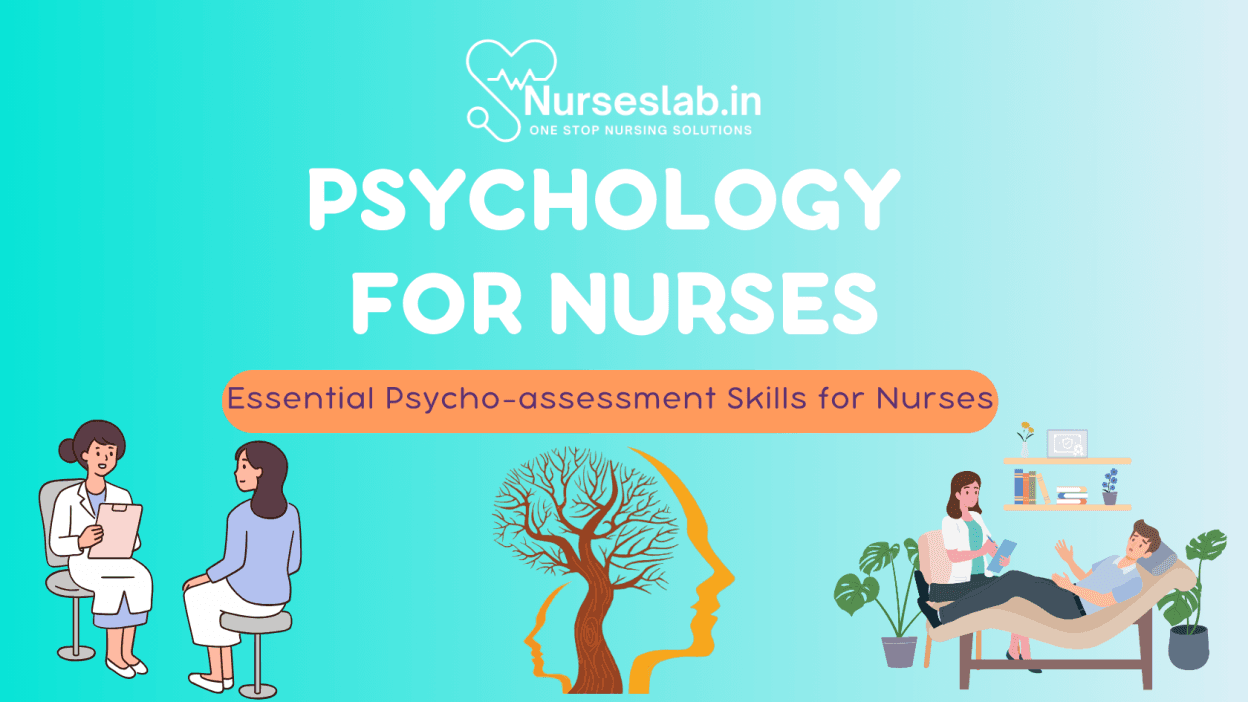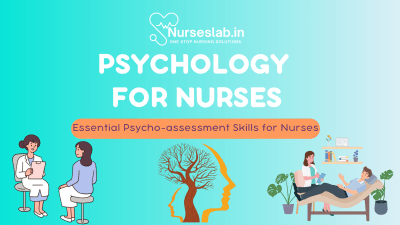Memory in psychology explores how information is processed and recalled. Nurses apply this knowledge to support patient education, assess cognitive function, and enhance documentation accuracy. Understanding memory types and processes improves care quality and communication.
Introduction
Memory is a fundamental cognitive process that underpins learning, decision-making, and identity. It allows individuals to encode, store, and retrieve information, thereby shaping behaviour, knowledge, and experiences. In educational and research contexts, understanding memory is essential for developing effective teaching methods, enhancing learning outcomes, and fostering cognitive development.

Nature of Memory
Definition and Characteristics
Memory can be defined as the capacity of the brain to encode, store, and retrieve information when required. It is not a single, uniform process but a complex interplay of multiple systems and mechanisms. The primary characteristics of memory include:
- Encoding: The process of transforming sensory input into a form that can be stored.
- Storage: The maintenance of encoded information over time.
- Retrieval: The ability to access stored information when needed.
Memory is reconstructive rather than reproductive, meaning that recall is not a perfect reproduction but often involves interpretation and filling in gaps. This reconstructive nature explains phenomena such as false memories and memory distortions.
Functions of Memory
Memory serves several critical functions in daily life and learning:
- Retention of Knowledge: Enabling individuals to remember facts, skills, and experiences.
- Learning and Adaptation: Allowing for the accumulation and application of new information.
- Identity Formation: Personal memories contribute to one’s sense of self and continuity over time.
- Decision-Making: Past experiences guide choices and problem-solving.
Thus, memory is central to both cognitive development and social functioning.
Types and Stages of Memory
Types of Memory
Memory is commonly classified into several types based on duration, content, and function. The primary types are:
- Sensory Memory: This is the initial stage that briefly holds sensory information (visual, auditory, tactile) for a few milliseconds to a couple of seconds. Iconic memory (visual) and echoic memory (auditory) are prominent examples. Sensory memory acts as a buffer for stimuli received through the senses, allowing for initial processing.
- Short-Term Memory (STM): Also known as working memory, STM temporarily holds information for immediate use, typically for 15-30 seconds. Its capacity is limited, famously estimated by George Miller as “the magical number seven, plus or minus two.” STM is essential for tasks such as mental arithmetic, following instructions, and reasoning.
- Long-Term Memory (LTM): LTM is responsible for storing information for extended periods, ranging from hours to a lifetime. It has a seemingly unlimited capacity. LTM is further subdivided into:
- Explicit (Declarative) Memory: Conscious recollection of facts and events. It includes episodic memory (personal experiences) and semantic memory (general knowledge).
- Implicit (Non-declarative) Memory: Unconscious memories, such as procedural memory (skills and habits) and priming effects.
Stages of Memory
The process of memory involves several stages, often conceptualised as a linear flow:
- Encoding: The transformation of sensory input into a format suitable for storage. Effective encoding is influenced by attention, emotional state, and the use of mnemonic devices.
- Storage: The maintenance of encoded information over time. Storage can be affected by factors such as rehearsal, consolidation (the process of stabilising a memory trace), and sleep.
- Retrieval: The process of accessing and bringing stored information into consciousness. Retrieval success depends on cues, context, and the strength of the memory trace.
Failures at any stage may result in forgetting, memory distortions, or retrieval errors.
Factors Influencing Memory
Memory performance is not uniform; it is shaped by a complex interplay of biological, psychological, and environmental factors.
Biological Factors
- Neural Mechanisms: Memory involves multiple brain regions, including the hippocampus (critical for forming new memories), amygdala (emotional memory), and prefrontal cortex (working memory and retrieval). Neurotransmitters such as acetylcholine and glutamate play key roles in synaptic plasticity, which underpins learning and memory.
- Genetics: Genetic factors can influence memory capacity and susceptibility to memory-related disorders, such as Alzheimer’s disease.
- Age: Memory generally declines with age, especially episodic memory. However, semantic memory can remain stable or even improve in some cases.
- Health and Nutrition: Adequate nutrition, especially omega-3 fatty acids, antioxidants, and B vitamins, supports brain health and memory function. Chronic illnesses, head injuries, and certain medications may impair memory.
Psychological Factors
- Attention: Focused attention during encoding enhances memory retention. Divided attention or distractions lead to poorer recall.
- Emotional State: Emotionally charged events are often remembered better due to the activation of the amygdala, which enhances encoding and storage.
- Motivation and Interest: Information that is personally relevant or interesting is more likely to be remembered.
- Stress: Acute stress can sometimes enhance memory formation, but chronic stress often impairs memory due to elevated cortisol levels.
Environmental Factors
- Context: Memory retrieval is more effective when the context at recall matches the context at encoding (context-dependent memory).
- Social and Cultural Influences: Cultural practices, language, and social interactions can shape memory processes and what is remembered.
- Sleep: Sleep is vital for memory consolidation. Both insufficient and poor-quality sleep can impair memory formation and retrieval.
Theories of Memory
Several influential theories have shaped our understanding of memory. These models offer insights into the structure, processes, and mechanisms underlying memory.
The Atkinson-Shiffrin Multi-Store Model
Proposed in 1968, the Atkinson-Shiffrin model conceptualises memory as a linear process involving three distinct stores: sensory memory, short-term memory, and long-term memory. Information passes sequentially through these stores, with attention, rehearsal, and encoding determining whether it is retained. The model’s simplicity provides a foundational understanding, though it has been critiqued for being overly rigid and not accounting for the complexity of memory processes.
Levels of Processing Theory
Developed by Craik and Lockhart in 1972, this theory posits that the depth of processing affects how well information is remembered. Shallow processing (e.g., focusing on physical features) leads to weaker memory traces, while deep processing (e.g., semantic analysis) results in more durable memories. This approach shifts the focus from memory stores to the quality of cognitive processing during encoding.
Working Memory Model
Proposed by Baddeley and Hitch in 1974, the working memory model expands on short-term memory by describing it as an active system with multiple components:
- Central Executive: Directs attention and coordinates activities.
- Phonological Loop: Processes verbal and auditory information.
- Visuospatial Sketchpad: Handles visual and spatial data.
- Episodic Buffer: Integrates information across domains and links to long-term memory.
This model better explains complex cognitive tasks and the manipulation of information in real time.
Other Notable Theories
- Dual Coding Theory (Paivio, 1971): Suggests that information is better remembered when encoded both visually and verbally.
- Schema Theory (Bartlett, 1932): Proposes that memory is organised around schemas—mental frameworks that help interpret and store information.
- Connectionist Models: These models view memory as distributed across networks of neurons, with learning involving the strengthening of connections.
Supporting Research
A vast body of research supports these models. For instance, neuroimaging studies have identified distinct brain regions involved in different memory processes, while experimental studies have demonstrated the impact of depth of processing and the effectiveness of mnemonics. However, memory remains a dynamic field, with ongoing debates about the interplay between different systems and the mechanisms of forgetting.
Methods to Improve Memory
Given the importance of memory in learning and everyday life, numerous strategies have been developed to enhance memory performance. These methods range from cognitive techniques to lifestyle modifications and technological aids.
Mnemonic Devices
- Acronyms and Acrostics: Creating words or phrases from the first letters of to-be-remembered items (e.g., VIBGYOR for the colours of the rainbow).
- Method of Loci: Associating information with specific locations in a familiar environment.
- Rhymes and Chunking: Using patterns, rhymes, or grouping information into meaningful chunks to aid recall.
Lifestyle Changes
- Regular Physical Exercise: Physical activity enhances brain health, increases blood flow, and supports neurogenesis, all of which benefit memory.
- Balanced Diet: Consuming foods rich in antioxidants, omega-3 fatty acids, and vitamins supports cognitive function.
- Adequate Sleep: Prioritising sleep, especially during periods of learning, facilitates memory consolidation.
- Stress Management: Techniques such as meditation, yoga, and mindfulness reduce the negative impact of chronic stress on memory.
Cognitive Strategies
- Elaborative Rehearsal: Linking new information to existing knowledge or creating meaningful associations.
- Distributed Practice: Spacing study sessions over time (the “spacing effect”) enhances long-term retention.
- Active Retrieval Practice: Regularly recalling information strengthens memory traces and improves recall.
- Visualisation and Imagery: Creating mental images to represent information.
- Organisation: Structuring information using outlines, concept maps, or categories.
Technological Aids
- Digital Reminders: Calendars, alarms, and apps help manage daily tasks and appointments.
- Memory Training Software: Computer-based programmes offer exercises to improve working memory, attention, and cognitive flexibility.
- Online Resources: Educational websites, videos, and interactive tools support learning and memory retention.
Educational Implications
Educators can foster better memory among students by incorporating evidence-based techniques into their teaching. Strategies such as using multiple modalities (visual, auditory, kinesthetic), providing meaningful context, encouraging active engagement, and promoting regular review sessions can significantly enhance memory retention and academic achievement.
Conclusion
Memory is a multifaceted cognitive process that is crucial for learning, adaptation, and personal identity. Its nature is shaped by biological, psychological, and environmental factors, and it operates through distinct types and stages. Theories such as the multi-store model, levels of processing, and working memory model provide valuable frameworks for understanding how memory functions. Importantly, memory can be improved through a combination of mnemonic techniques, lifestyle modifications, cognitive strategies, and technological aids. For students, educators, and researchers, a thorough understanding of memory not only advances academic and professional pursuits but also enriches daily life and well-being.
REFERENCES
- R. Sreevani, Applied Psychology for Nurses, 5th Edition, 2024, Jaypee Publishers, ISBN: 978-9356966963.
- Xavier Belsiyal, Applied Psychology for Nurses, 1st Edition, July 15, 2023, Elsevier Publishers, ISBN: 978-8131266366
- Mary F Porter, Applied Psychology for Nurses, 27 October 2022, Legare Street Press, IBSN: 978-1015804302.
- Douglas A. Bernstein, Introduction to Clinical Psychology, 10th Edition, 31 October 2024, Cambridge University Press, ISBN: 978- 1009379298.
- Sailaxmi Gandhi, Basic and Applied Psychology for Nurses, First Edition, January 2023, Wolters Kluwer Publications, ISBN: 978-9395736534.
- Jacob Anthikad, Psychology for Graduate Nurses, 5th Edition, 30 January 2014, Jaypee Publishers, ISBN: 978-9351521549.
- Kumar, Rajesh. (2017). Basic Psychology for Nurses. https://www.researchgate.net/publication/337811601_Basic_Psychology_for_Nurses
Stories are the threads that bind us; through them, we understand each other, grow, and heal.
JOHN NOORD
Connect with “Nurses Lab Editorial Team”
I hope you found this information helpful. Do you have any questions or comments? Kindly write in comments section. Subscribe the Blog with your email so you can stay updated on upcoming events and the latest articles.





